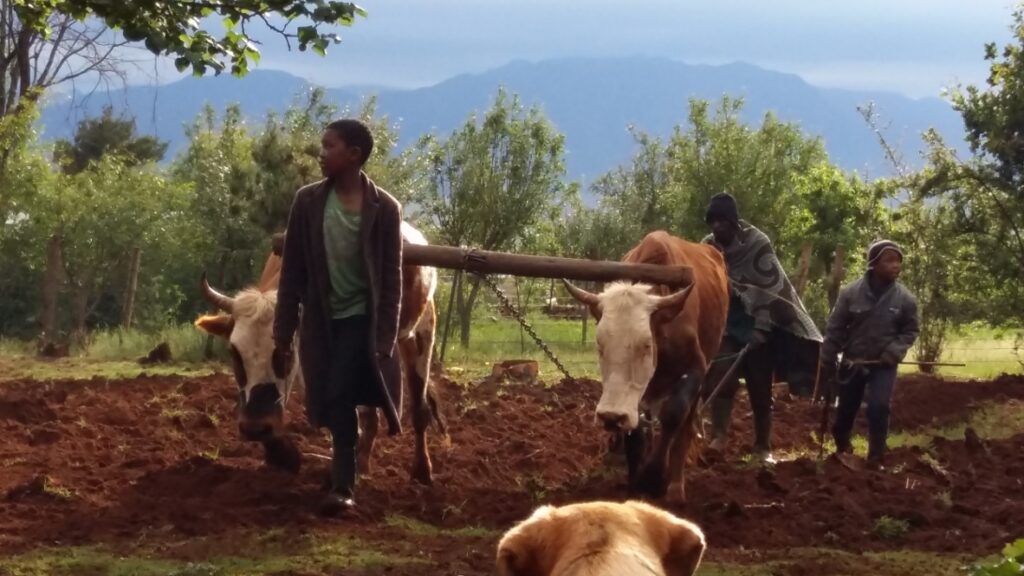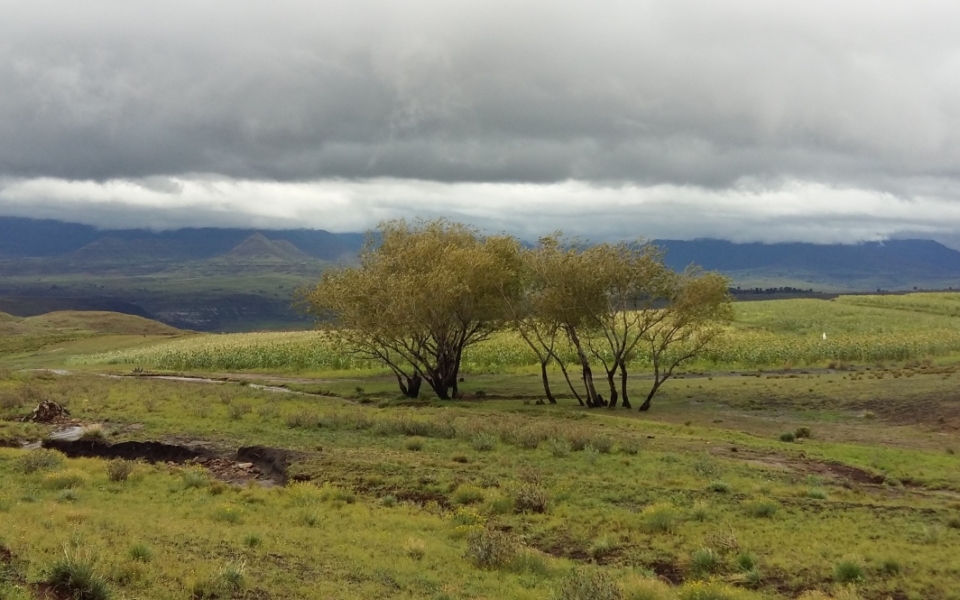


The Rural Context: Home
We started our work in Lesotho because of the dire need for literacy acquisition and education to help break the cycle of poverty. The children of the Malealea valley, and indeed much of the country, are from poor families. 62% of Lesotho’s children live in rural areas, where poverty levels are highest, and more than half of these rural children live in poverty1.
20% of Basotho children have lost one biological parent and 5.8% have lost both2. Children who do have parents spend little time with them that’s devoted to play, talk, homework, and stories. These adults are busy in the fields, tending animals, bringing in the harvest, trying to make ends meet. Women are typically responsible for childcare, but the days are long and full of household chores.
There is no established access to books or encouragement to read in rural Lesotho. 97% of rural children live in homes that have fewer than three children’s books3. It is extremely rare for children we work with to have any books at all, toys that are in good condition, or commercially produced games to play. People in rural communities have no access to online materials and very few have computers. But like children everywhere, the children of Malealea express their creativity through the games they invent and toys they make from items around them.
The Rural Context: School
English is the Language of Learning and Teaching (LOLT) in Lesotho. This is government policy that is strictly enforced to the point that if children are “caught” speaking Sesotho at school, they are punished, often harshly. Children still have access to textbooks in Sesotho, but these books are used strictly in the classroom and not allowed to be taken home. While a few Primary schools in Malealea have small libraries, they most often contain textbooks which also don’t go home, and some libraries are not accessed by children at all.
From the point of view of teachers and parents, there is little interest in books written in mother tongue Sesotho. Allied to this is the attitude that English is a far more important language in terms of children’s futures. The drive, educationally speaking, is towards English proficiency, and so textbooks are far more important than picture storybooks written in Sesotho-Lesotho.
Even if the importance of reading in the mother tongue was stressed at school, there are very few storybooks available to choose from. There is no publishing industry on any scale in the country. The struggle to secure the funding to create the books, to have them printed, and to get them distributed is exceptionally difficult, and there have only been a handful of organisations who have done this.
Beyond Lesotho
Our library, books, and Book Festivals have allowed many rural Basotho children to experience the joy of storybooks and have opened up the world of reading to them. We intend to run similar projects in other rural communities in southern Africa, where the situation for children at home and at school is much the same. One of the greatest challenges that South Africa faces is rural poverty and poor education. Almost half of urban and rural parents never read a book or draw with their children, and there is a significant lack of books available to children at school4. We believe our work in South Africa is essential and could achieve comparable success to what we have seen in Lesotho.
1: UNICEF, 2021. Lesotho Multidimensional Child Poverty Report.
2: Better Care Network, 2017. Lesotho DHS 2014: Children’s Care and Living Arrangements.
3: Bureau of Statistics, 2019. Lesotho Multiple Indicator Cluster Survey 2018, Statistical Snapshots: Key Survey Findings.
4: Stats SA, 2020. General Household Survey 2018.
